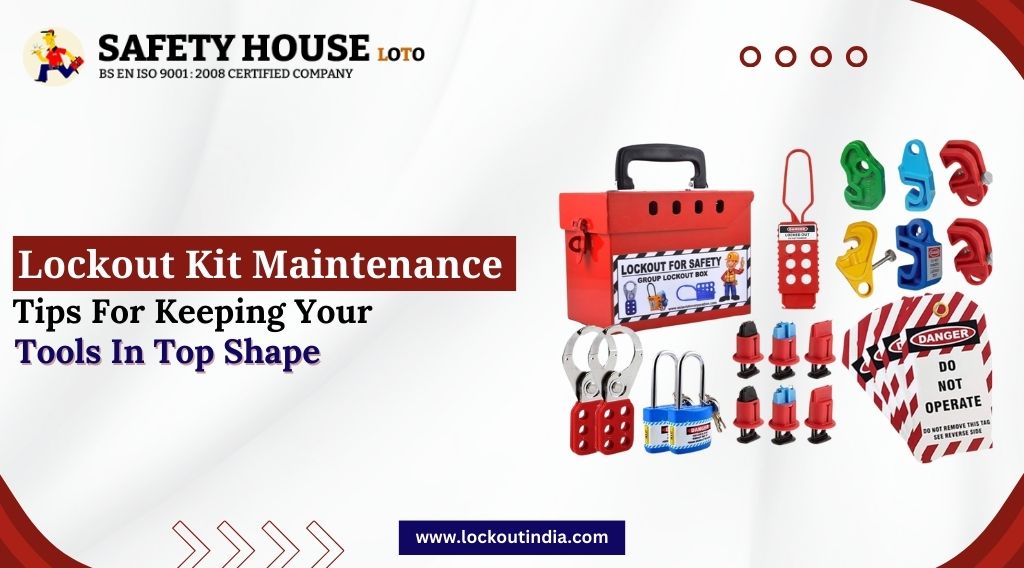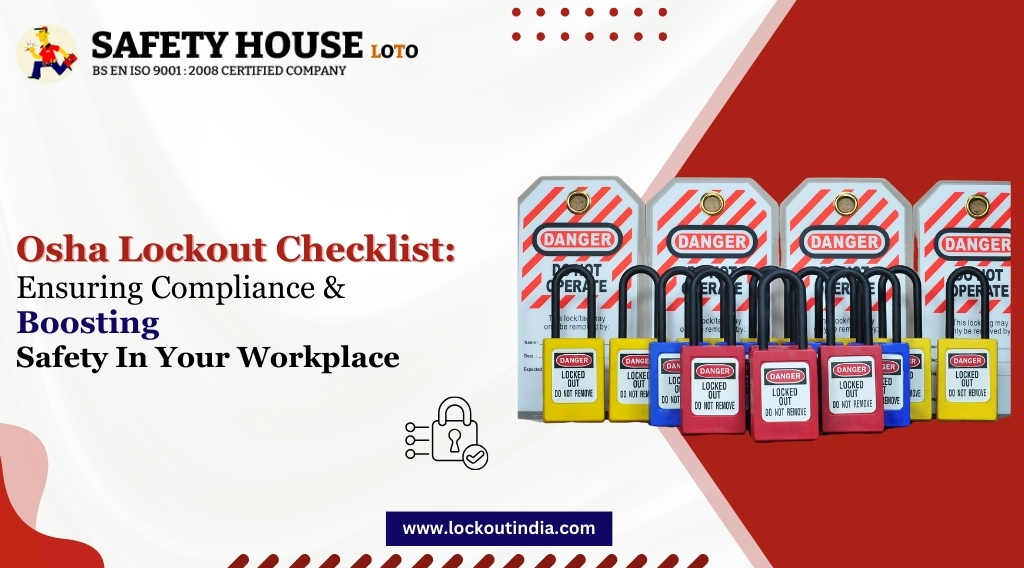
Lockout Kit Maintenance: Tips for Keeping Your Tools in Top Shape
Essential Tips for Maintaining Your Lockout Kit
Introduction:
A lockout kit serves as a cornerstone of safety protocols in industrial environments, providing essential tools for controlling hazardous energy sources during maintenance or repair tasks. However, ensuring the effectiveness of these kits requires regular maintenance and upkeep. In this article, we’ll explore the importance of lockout kit maintenance and provide valuable tips for keeping your tools in top shape, enhancing workplace safety and compliance.
Understanding Lockout Kits:
Before delving into maintenance tips, let’s first understand what comprises a lockout kit. Typically, a lockout kit contains a variety of devices and accessories designed to isolate energy sources and prevent the accidental or unauthorized startup of machinery or equipment. Common components include padlocks, lockout hasps, tags, circuit breaker lockouts, valve lockouts, and other specialized devices tailored to different types of energy sources.
The Importance of Lockout Kit Maintenance:
Lockout kit maintenance is vital for ensuring the reliability and effectiveness of safety measures in the workplace. Regular upkeep helps identify and address issues such as damaged or worn-out components, ensuring that lockout devices function as intended when needed. By maintaining lockout kits in optimal condition, businesses can minimize the risk of accidents, protect workers, and maintain compliance with regulatory standards.
Tips for Lockout Kit Maintenance:
- Regular Inspections: Conduct periodic inspections of lockout kits to check for signs of damage, wear, or corrosion. Inspect each component thoroughly, paying attention to padlocks, hasps, tags, and lockout devices for any defects or malfunctioning parts.
- Replace Worn-Out Components: Replace any worn-out or damaged components promptly to ensure the integrity of the lockout kit. This includes replacing padlocks with broken shackles, worn-out tags, or damaged lockout devices to maintain effectiveness and reliability.
- Clean and Lubricate: Clean lockout devices regularly to remove dirt, debris, or contaminants that may impair their functionality. Apply lubricants to moving parts such as hinges and locking mechanisms to ensure smooth operation and longevity.
- Store Properly: Proper storage is essential to prevent damage and prolong the lifespan of lockout kits. Store kits in designated areas away from harsh environmental conditions, extreme temperatures, moisture, or direct sunlight.
- Update and Expand: Periodically review and update lockout kits to ensure they remain relevant and effective for the equipment and energy sources present in the workplace. Consider expanding kits to accommodate new machinery or equipment additions.
- Employee Training: Provide comprehensive training to employees on proper lockout kit maintenance procedures. Educate workers on the importance of inspecting, cleaning, and replacing components as part of their safety responsibilities.
- Document Maintenance Activities: Maintain detailed records of lockout kit maintenance activities, including inspection dates, component replacements, and any issues identified and addressed. Documentation helps track maintenance history and ensures accountability.
- Seek Professional Assistance: If unsure about maintenance procedures or encountering complex issues with lockout kits, seek assistance from qualified professionals or manufacturers for guidance and support.
Conclusion:
Lockout kit maintenance is essential for ensuring the effectiveness of safety measures in industrial environments. By following the tips outlined above, businesses can keep their lockout kits in top shape, enhancing workplace safety, minimizing the risk of accidents, and maintaining compliance with regulatory standards. Remember, proactive maintenance is key to safeguarding workers and promoting a culture of safety in the workplace.

OSHA Lockout Checklist: Ensuring Compliance and Boosting Safety in Your Workplace
OSHA Lockout Checklist for Workplace Safety
Introduction:
In today’s industrial landscape, prioritizing safety measures is paramount to ensure the well-being of workers and compliance with regulatory standards. The Occupational Safety and Health Administration (OSHA) plays a crucial role in setting guidelines and regulations to maintain workplace safety. One such vital aspect regulated by OSHA is lockout procedures, aimed at preventing hazardous energy releases during maintenance or servicing activities. This article delves into the significance of OSHA lockout procedures, the importance of compliance, and how implementing a comprehensive lockout checklist can bolster safety in the workplace.
Understanding OSHA Lockout:
OSHA lockout refers to the set of procedures designed to control hazardous energy sources, such as electrical, mechanical, hydraulic, pneumatic, chemical, and thermal energy, to prevent unexpected startup or release of stored energy. These procedures mandate the use of lockout devices to isolate energy sources and ensure equipment remains inoperative during maintenance or repair tasks. Adhering to OSHA standards not only mitigates the risk of workplace accidents but also fosters a culture of safety within the organization.
The Importance of OSHA Lockout Compliance:
Compliance with OSHA lockout regulations is non-negotiable for businesses operating in industrial settings. Failure to adhere to these standards can result in severe consequences, including fines, penalties, and, most importantly, jeopardizing the safety of workers. By complying with OSHA lock requirements, companies demonstrate their commitment to workplace safety, protecting employees from potential hazards and ensuring regulatory adherence.
Key Elements of an OSHA Lockout Checklist:
Creating and implementing an OSHA lockout checklist is instrumental in ensuring compliance and enhancing safety protocols within the workplace. Below are the key elements to include in a comprehensive lockout checklist:
- Identification of Energy Sources: Begin by identifying all energy sources present in the workplace, including electrical, mechanical, and pneumatic systems. Conduct a thorough assessment to pinpoint potential hazards and determine the necessary lockout procedures for each energy source.
2. Lockout Device Selection: Select appropriate lockout devices suitable for isolating each energy source effectively. Ensure lockout devices are durable, tamper-resistant, and compatible with the equipment being serviced.
3. Employee Training and Awareness: Provide comprehensive training to employees on OSHA lockout procedures, emphasizing the importance of proper lockout/tagout (LOTO) practices. Employees should be proficient in identifying energy sources, applying lockout devices, and understanding the significance of LOTO protocols for their safety.
4. Documentation and Procedures: Develop clear and concise lockout/tagout procedures outlining step-by-step instructions for implementing lockout measures. Maintain detailed documentation of lockout procedures, including equipment-specific instructions and authorized personnel responsible for performing lockout tasks.
5. Periodic Inspections and Audits: Conduct regular inspections and audits to ensure compliance with lockout procedures and identify any deviations or shortcomings. Address any deficiencies promptly and revise lockout procedures as necessary to maintain effectiveness.
6. Communication and Signage: Implement clear communication protocols and signage to alert employees of ongoing lockout activities and the status of equipment undergoing maintenance. Use standardized lockout tags and labels to indicate the presence of lockout devices and provide instructions for safe operation.
Benefits of Implementing an OSHA Lockout Checklist:
Implementing an OSHA lockout checklist offers numerous benefits for businesses, including:
- Enhanced Workplace Safety: By following standardized lockout procedures, businesses can effectively control hazardous energy sources and reduce the risk of workplace accidents.
- Compliance with Regulatory Standards: Adhering to OSHA lockout regulations ensures compliance with legal requirements, mitigating the risk of fines and penalties.
- Prevention of Equipment Damage: Proper lockout procedures prevent unauthorized operation of equipment during maintenance, minimizing the risk of damage or malfunction.
- Protection of Personnel: Lockout procedures safeguard workers from potential injuries caused by unexpected energy releases or equipment startup.
- Establishment of Safety Culture: Implementing robust lockout protocols fosters a culture of safety within the organization, promoting awareness and accountability among employees.
Conclusion:
In conclusion, OSHA lockout procedures are critical for maintaining workplace safety and compliance with regulatory standards. Implementing an OSHA lockout checklist is essential for identifying energy sources, selecting appropriate lockout devices, providing employee training, documenting procedures, conducting inspections, and fostering effective communication. By prioritizing OSHA lockout compliance and integrating comprehensive lockout protocols, businesses can mitigate risks, protect personnel, and promote a culture of safety in the workplace. Remember, safety is paramount, and adherence to OSHA lockout standards is key to ensuring a secure and productive work environment.

